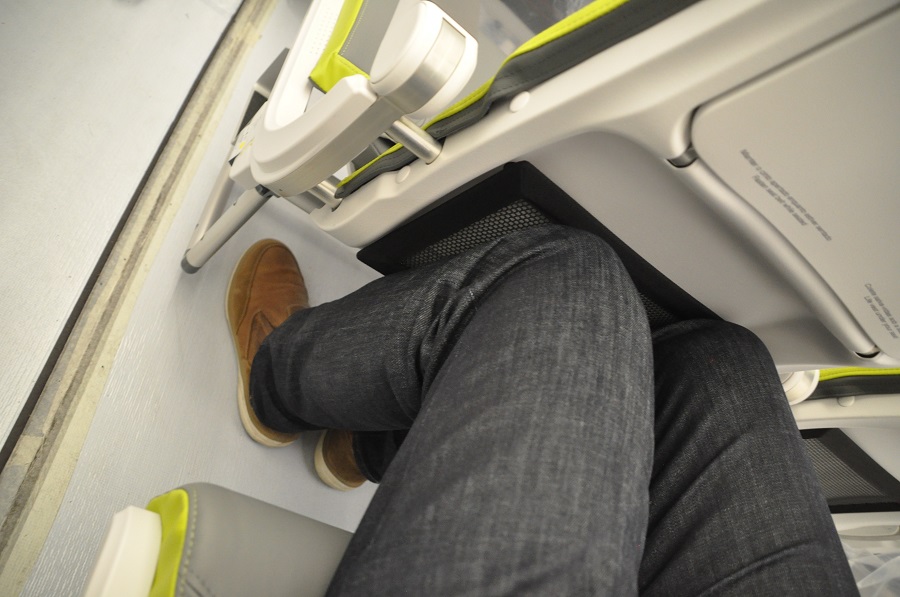Has the tide turned on knee-crunching economy seats?
30 April, 2018
5 min read


The battle to stop the economy class crush as airlines cram more seats into aircraft may have reached a turning point after a key US vote on minimum size standards.
The US House of Representatives has overwhelmingly passed a House Transportation and Infrastructure Committee bill that includes a requirement that the Federal Aviation Administration set minimum size standards for aircraft seating.
The seating requirement was part of a reauthorization bill that guarantees funding for the FAA for the next five years and which came stuffed with other consumer-focused extras. The Senate still has to vote on the reauthorization.
These include a prohibition on voice calls during flights, a ban on bumping passengers who have already boarded an aircraft and greater transparency about computer system failures and other disruptions.
The seat requirement is still vague and gives the FAA a year to develop regulations on minimum standards for seating, including seat pitch, width and length.
It does not specify what these should be other than to say they would be “minimum dimensions for passenger the safety and health of passengers”.
Nor does it give any indication how the rules would relate to cramped seating already in place.
There is some speculation is that it could establish a floor for seat pitch at 28 inches and a minimum width of 16.5 inches, dimensions that would still be cramped for many people.
US Congressman Steve Cohen, who added the Seat Egress in Air Travel (SEAT) Act to the larger FAA bill, said the vote was a win for passengers and safety.
"Airlines should never be allowed to put profits ahead of safety and health," he said. "Passengers need to be able to evacuate quickly and safely in the event of an emergency, and the FAA needs to make sure they can.”
Yet to enter the mix is an FAA response to a Federal Court order requiring it to prove that tighter seating does not affect safety.
READ: Airfares may triple if passengers refuse to leave baggage during evacuations.
The FAA was forced to revisit the issue after a federal court judge last year ordered it to address concerns about what she described as “the incredibly shrinking airline seat”.
“As many have no doubt noticed, aircraft seats and the spacing between them have been getting smaller and smaller, while American passengers have been growing in size,” Judge Patricia Millett said.
The court ruling came after advocacy group Flyers Rights petitioned the FAA in 2015 to regulate seat space.
The agency refused so Flyers Rights took legal action, arguing that narrower seats and closer spacing were “endangering the safety, health and comfort of airline passengers.”
In her ruling, Willet expressed doubts about an FAA assertion that seat spacing did not affect the safety or speed of passenger evacuations.
“To support that conclusion, the Administration pointed to (at best) off-point studies and undisclosed tests using unknown parameters,” she said.
Flyers Rights says seat width has shrunk from some 18.5 inches in the early part of the 21st Century to 17 inches in the middle of this decade. At the same time, it says seat pitch (the distance between seats) has gone from 35 inches to 31 inches and, in some planes, to 28 inches.
Flying aircraft with more seats benefits airline profits but the carriers argue customers also gain because they are able to get lower fares. They also contend new seat designs allow them to fit in more seats without significantly affecting “personal space”.
The FAA said in March this year it was still evaluating how to address the court’s finding, but it expected to release its decision “soon”.
Watch: Reach for the sick bag! Crosswind landings and take-offs.
The reauthorization bill’s provision relating to bumping of involuntary passengers also calls on the Transportation Secretary to clarify current regulations regarding compensation offered to bumped passengers.
This includes a requirement that an airline must proactively offer to pay a passenger subject to involuntary denied boarding rather that wait for a request for compensation.
In the case of widespread disruptions, airlines would be required to prominently publish on their websites a clear statement saying whether an affected traveler would be provided with accommodation, ground transportation, meal vouchers and travel on another airline.
The prohibition on voice calls would see a current Federal Communications Commission ban on mobile phones extended to other devices capable of using services such as Skype and FaceTime.
A rule popular with consumer advocates and due to be wound back prevents airlines advertising fares without including taxes and charges.
Requirements that airlines advertise “all-in” fares have been championed by competition regulators around the world to give consumers a better and more immediate grasp of the total cost of travel.
The US legislation would again allow base fares to be advertised provided the taxes, charges and total cost are “clearly and separately” disclosed.
This could be in the form of a link or pop-up on an internet site or mobile phone app, the bill said.
Next Article
2 min read
Qantas triples profit but misses mark

Get the latest news and updates straight to your inbox
No spam, no hassle, no fuss, just airline news direct to you.
By joining our newsletter, you agree to our Privacy Policy
Find us on social media
Comments
No comments yet, be the first to write one.
